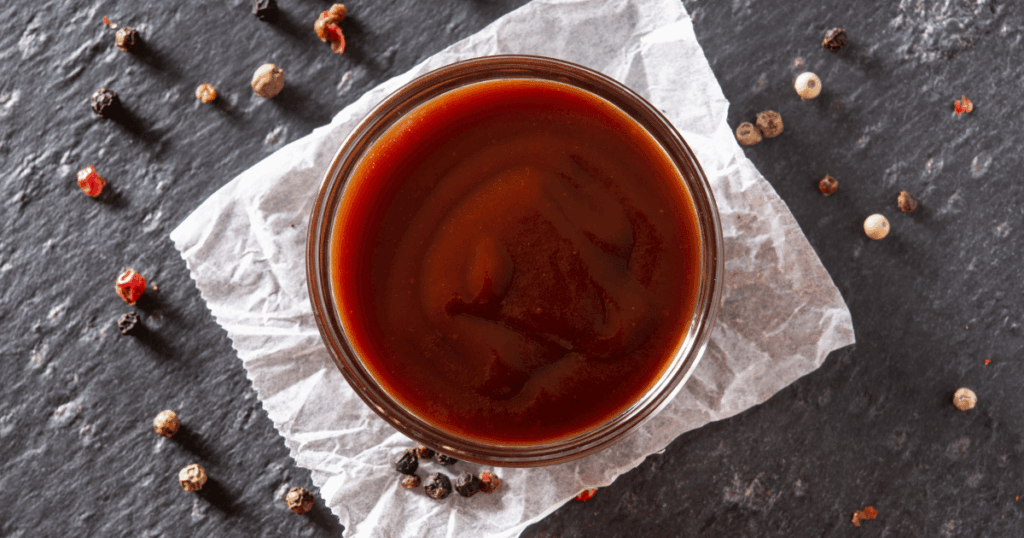BBQ Sauce Showdown: Exploring Different Flavors and Styles
A Comprehensive Guide to Different BBQ Sauce Flavors: Exploring the Variety of Tastes and Aromas
Welcome to the wonderful world of BBQ sauce! Whether you’re a BBQ aficionado or just getting started, you’ll find that there’s a wide variety of flavors and aromas to explore. From sweet and smoky to tangy and spicy, there’s something for everyone. In this guide, we’ll take a look at some of the most popular BBQ sauce flavors and explore the unique tastes and aromas that make them so special.
Sweet and Smoky BBQ Sauce – Typically made with a base of tomato paste, molasses, brown sugar, and spices. The sweetness of the molasses and brown sugar is balanced out by smoky spices like smoked paprika and cumin. Great for ribs, chicken, and pulled pork. This style often has roots in Kansas City and is beloved for its balance of heat and sweetness.
Tangy and Spicy BBQ Sauce – Often made with vinegar, Worcestershire sauce, and hot peppers or hot sauce. Vinegar gives it a sharp tang, while cayenne or chili powder adds a kick. Excellent for beef, brisket, or chicken wings. It’s common in the Carolinas, where vinegar-forward sauces are used to brighten slow-cooked pork.
Fruity and Sweet BBQ Sauce – Made with fruit juices like pineapple, apple, or mango, and sweetened with honey or brown sugar. The fruitiness offers a bright contrast, while the spices add warmth. Pairs well with pork chops, grilled chicken, or even salmon. These fruit-infused sauces are growing in popularity among gourmet grilling enthusiasts.
Mustard-Based BBQ Sauce – This style is especially popular in South Carolina. Made with yellow mustard, vinegar, and spices, it delivers a tangy, savory punch that works well with pork and chicken. The mustard provides a bold and zesty backdrop that stands up to the smokiest meats.
White BBQ Sauce – A truly unique style native to Alabama, white BBQ sauce uses a mayonnaise base mixed with vinegar, black pepper, and horseradish. It’s a creamy, tangy sauce often served with grilled chicken, and it’s rapidly gaining popularity across the U.S.
No matter what type of BBQ sauce you prefer, there’s something for everyone. From sweet and smoky to tangy and spicy, there’s a flavor for every palate. So grab your favorite bottle of BBQ sauce—or try making one at home—and explore the bold world of BBQ flavors.
Check out the ultimate guide to making homemade BBQ sauce
BBQ Sauce Showdown: Comparing Regional Styles and Their Unique Characteristics
Carolina-Style BBQ Sauce – Typically vinegar-based, with a sharp tangy flavor and minimal sweetness. It’s thin, slightly spicy, and best used as a mop sauce or finishing drizzle for pulled pork. A staple in Eastern North Carolina BBQ, it enhances rather than masks the meat.
Kansas City-Style BBQ Sauce – A thick, sweet, tomato-based sauce with molasses and brown sugar. Often spiced with chili powder and cayenne, it’s ideal for ribs and brisket. Known for its versatility, it’s also a favorite on burgers and grilled sausages.
Memphis-Style BBQ Sauce – Combines vinegar and tomato with a touch of sweetness. It’s smoky, balanced, and usually applied lightly so it doesn’t overpower the meat. Memphis BBQ often leans dry, but their sauce brings extra depth when served on the side.
Texas-Style BBQ Sauce – Often bolder and spicier, with chili powder, black pepper, and smoky beef broth or Worcestershire. Best with brisket and beef ribs. Texans are known for their minimalist seasoning approach, letting the meat shine while the sauce provides complementary heat.
South Carolina Mustard Sauce – Bright yellow, tangy, and slightly sweet. A legacy of German settlers, it’s a standout condiment that adds unique color and punch to any BBQ spread.
Each style brings its own regional twist to the plate.
The Art of Making Homemade BBQ Sauce: Tips and Tricks for Crafting the Perfect Sauce
Crafting your own BBQ sauce allows you to control the flavor balance and ingredients. Here’s how to do it:
- Start with a Base – Most sauces start with ketchup, tomato paste, mustard, or vinegar.
- Sweeten It Up – Add honey, brown sugar, maple syrup, or molasses to balance out the tang.
- Add Acidity – Use apple cider vinegar or citrus juice to cut through richness and preserve freshness.
- Spice It – Try black pepper, chili flakes, cayenne, or chipotle powder depending on your heat tolerance.
- Layer Flavors – Worcestershire sauce, garlic, mustard, or soy sauce add body and complexity.
- Simmer and Taste – Let your sauce simmer for 20–30 minutes to blend flavors. Adjust sweetness, spice, and acidity as needed.
Want to try something next-level? Add fruit purées, bourbon, or espresso for creative depth. Homemade BBQ sauce is customizable and always a crowd-pleaser. Once you find your perfect blend, bottle it up and use it as a signature touch at every grill session.
Final Thoughts
From store-bought standouts to homemade masterpieces, BBQ sauce is more than just a condiment—it’s a defining element of flavor. Whether you’re dressing up ribs, glazing chicken, or layering a pulled pork sandwich, the right sauce brings it all together.
If you’re new to BBQ and want to experiment, try a sauce flight: set up a small tasting of different styles alongside various grilled meats. You’ll learn what you like best and give your guests a fun, interactive experience.
Ready to explore more? Check out our curated collection of sauces and seasoning at John Mull’s Meat Market and elevate your next cookout.
Need BBQ pairing ideas for your sauce? Visit AmazingRibs.com’s flavor profiles and pairing chart

